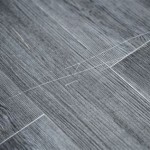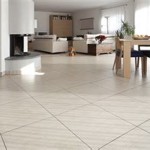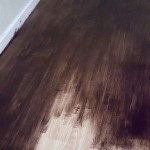White Hardwood Flooring: A Comprehensive Guide
White hardwood flooring has surged in popularity as a design choice in both residential and commercial spaces. Its ability to brighten rooms, enhance a sense of spaciousness, and contribute to a clean, modern aesthetic makes it a desirable option for a wide range of design styles. This article will explore the various aspects of white hardwood flooring, including its types, advantages, disadvantages, installation considerations, and maintenance requirements.
The term "white hardwood flooring" encompasses a spectrum of shades, from pure, bright white to off-white, cream, and light grey washes. The choice of specific shade often depends on the overall design scheme and desired ambiance. Regardless of the exact hue, the fundamental characteristic remains a light color that reflects light and creates a brighter, more open feeling in the space.
Types of White Hardwood Flooring
The selection of white hardwood flooring involves choosing between solid hardwood and engineered hardwood options, as well as determining the specific wood species and finish.
Solid Hardwood: Solid hardwood flooring consists of planks milled from a single piece of wood. It's a durable and long-lasting option that can be sanded and refinished multiple times throughout its lifespan. White solid hardwood is often achieved through bleaching and staining processes, which require skilled application to ensure consistent color and prevent damage to the wood.
Engineered Hardwood: Engineered hardwood consists of multiple layers of wood veneer bonded together, with a top layer of hardwood. This construction provides greater stability compared to solid hardwood, making it less susceptible to expansion and contraction due to changes in humidity and temperature. Engineered hardwood is a suitable option for basements and other areas with fluctuating moisture levels. White engineered hardwood can be produced using a variety of techniques, including staining, painting, and applying pre-finished top layers.
Wood Species: Several wood species are commonly used to create white hardwood flooring. Each species possesses unique characteristics in terms of grain pattern, hardness, and color undertones. Oak, maple, ash, and birch are popular choices due to their durability and ability to accept stains and finishes effectively. The natural undertones of the wood species can influence the final appearance of the white finish; for example, red oak may exhibit pinkish undertones, while white oak tends to have a more neutral base.
Finishes: The finish applied to white hardwood flooring plays a crucial role in its appearance, durability, and maintenance requirements. Polyurethane finishes provide a protective layer that resists scratches, stains, and wear. Oil-based polyurethane offers excellent durability, while water-based polyurethane is a more environmentally friendly option with lower VOC emissions. Other finishes include penetrating oils and waxes, which offer a more natural look and feel but typically require more frequent maintenance. Matte finishes are often preferred for white hardwood as they conceal minor imperfections and create a softer, more contemporary aesthetic.
Advantages of White Hardwood Flooring
White hardwood flooring offers several aesthetic and practical benefits that contribute to its popularity.
Brightness and Spaciousness: The primary advantage of white hardwood flooring is its ability to reflect light and brighten a room. This is particularly beneficial in spaces with limited natural light or smaller dimensions. The reflective properties of white flooring create an illusion of increased spaciousness, making rooms feel larger and more open. This is particularly effective in smaller apartments or homes where maximizing the sense of space is crucial.
Versatility in Design: White hardwood flooring serves as a neutral backdrop that complements a wide range of design styles. It pairs well with both minimalist and maximalist aesthetics, providing a blank canvas for furniture, décor, and accent colors. White flooring can be incorporated into modern, Scandinavian, coastal, and farmhouse-style interiors, among others. Its versatility allows for easy adaptation to changing design preferences and trends.
Clean and Modern Aesthetic: White hardwood flooring contributes to a clean, modern, and sophisticated aesthetic. It creates a sense of order and simplicity, making it an ideal choice for contemporary spaces. The bright, crisp appearance of white flooring can enhance the feeling of cleanliness and hygiene, particularly in kitchens and bathrooms.
Hides Dust Comparatively Well: While darker flooring shows dust readily, white and lighter variations tend to conceal it. This doesn't mean cleaning should be less frequent, but it can offer a less immediately dusty appearance between cleanings.
Disadvantages of White Hardwood Flooring
While white hardwood flooring offers numerous benefits, it's important to consider its potential drawbacks before making a decision.
Susceptibility to Staining and Scratches: White flooring, especially if it has a light finish, can be more prone to showing stains and scratches compared to darker options. Spills should be cleaned immediately to prevent permanent discoloration. The choice of finish significantly impacts stain resistance; durable polyurethane finishes offer better protection than oil-based or wax finishes. Scratches caused by furniture, pets, or foot traffic can be more visible on white flooring and may require periodic refinishing.
Maintenance Requirements: Maintaining white hardwood flooring requires regular cleaning and care to preserve its appearance. Dusting or vacuuming should be performed frequently to remove dirt and debris. Regular mopping with a pH-neutral cleaner is necessary to prevent buildup of grime. While white flooring can hide light dust better than dark, it exaggerates spots from spills. Preventative measures, such as using rugs in high-traffic areas and placing felt pads under furniture legs, can help minimize wear and tear.
Cost Considerations: White hardwood flooring, especially solid hardwood, can be more expensive than other flooring options. The bleaching and staining processes required to achieve a consistent white finish often add to the material cost. Installation costs may also be higher due to the specialized skills required to handle white hardwood flooring. The long-term cost of ownership should also be considered, including the expenses associated with refinishing and maintenance.
Potential for Glare: In rooms with abundant natural light, white hardwood flooring can create glare, especially if it has a glossy finish. This can be mitigated by using matte finishes or adding rugs and window treatments to diffuse the light. The orientation of the room and the size and placement of windows should be considered when selecting the finish for white hardwood flooring.
Installation Considerations
Proper installation is crucial to ensure the longevity and performance of white hardwood flooring. Both solid and engineered hardwood floors require careful acclimation to the room's temperature and humidity levels before installation. This typically involves storing the flooring in the room for several days to allow it to adjust to the environment.
Subfloor Preparation: The subfloor must be clean, level, and dry before installing hardwood flooring. Any imperfections or unevenness in the subfloor can affect the appearance and stability of the finished floor. Self-leveling compounds may be necessary to correct unevenness. Moisture barriers should be installed to prevent moisture from seeping up through the subfloor and damaging the hardwood flooring.
Installation Methods: Solid hardwood flooring is typically nailed or stapled to the subfloor. Engineered hardwood flooring can be installed using a variety of methods, including nailing, stapling, gluing, or floating. Floating installations involve interlocking the planks together without attaching them directly to the subfloor. This method is often preferred for engineered hardwood because it allows for expansion and contraction due to changes in humidity. The manufacturer's instructions should be followed carefully when installing hardwood flooring.
Expansion Gaps: Expansion gaps should be left around the perimeter of the room to allow for natural expansion and contraction of the wood. These gaps are typically covered by baseboards or trim. Failure to provide adequate expansion gaps can result in buckling or warping of the flooring.
Professional Installation: While DIY installation is possible, professional installation is generally recommended, especially for solid hardwood flooring. Experienced installers have the knowledge and skills to ensure proper acclimation, subfloor preparation, and installation techniques. Professional installation can also help prevent costly errors and ensure the long-term performance of the flooring.
Maintenance and Care
Regular maintenance is essential to preserve the beauty and durability of white hardwood flooring.
Regular Cleaning: Dusting or vacuuming should be performed regularly to remove dirt, dust, and debris. This helps prevent scratches and wear on the finish. Use a vacuum with a soft brush attachment to avoid scratching the floor. Avoid using vacuums with beater bars, as they can damage the finish over time.
Mopping: Mopping should be done with a pH-neutral cleaner specifically designed for hardwood floors. Avoid using excessive water when mopping, as it can seep into the seams and damage the wood. Wring out the mop thoroughly before applying it to the floor. Clean up spills immediately to prevent staining.
Protective Measures: Place rugs in high-traffic areas, such as entrances, hallways, and living rooms, to protect the flooring from wear and tear. Use felt pads under furniture legs to prevent scratches. Avoid wearing shoes with high heels or cleats on the flooring.
Refinishing: Over time, white hardwood flooring may require refinishing to restore its original appearance. Refinishing involves sanding down the existing finish and applying a new coat of stain and sealant. Solid hardwood flooring can be refinished multiple times, while engineered hardwood flooring can only be refinished a limited number of times, depending on the thickness of the top layer.
Professional Maintenance: Consider hiring a professional cleaning service periodically to deep clean and maintain the flooring. Professionals have the equipment and expertise to remove stubborn stains and revitalize the finish.

Bellawood 3 4 In Matte Carriage House White Ash Solid Hardwood Flooring 25 Wide Ll

Bellawood Artisan 5 8 In Sanibel Island White Oak Distressed Engineered Hardwood Flooring 9 45 Wide Ll

White Hardwood Flooring Ll

Bellawood Artisan 5 8 In Barcelona White Oak Engineered Hardwood Flooring 7 Wide Ll

Rustic Snowdrop Hardwood Color Collection West Wood

7 Ply Engineered Wood 9 Wide 75 Rl Long Plank French White Oak Floret

Bellawood 5 8 In Prague White Oak Engineered Hardwood Flooring 7 Wide Ll

White Wood Floors Options Ideas Home Flooring Pros

Porcelain Hardwood Flooring Hearthwood Floors

White Hardwood Floors Wood Floor Design
Related Posts








